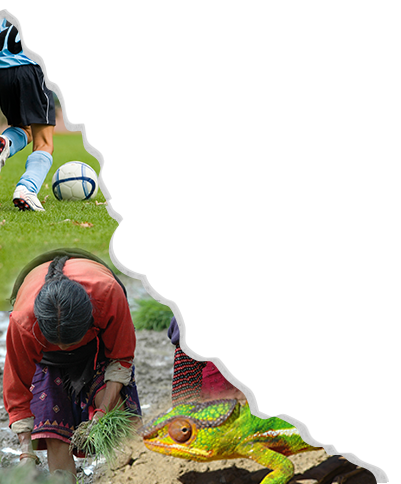-
Share this
Teaching Culture
The purpose of this blog is to build a community of anthropologists interested in pedagogy and to provide them with a reputable source of information and a way to share news on teaching anthropology, publishing in the field, new innovations, and new books.Search
-
Recent Posts
- ESPERANZA SPEAKS: The Power of Ethnographic Storytelling
- Teaching Culture through Tourism: Agency, Authenticity, and Colonialism
- “We are not brains on sticks!” Teaching Anthropology with the Senses
- What online learning taught me about (online) teaching
- Solidarity in Protest: Highlighting Positive Social Change in Urban Costa Rica
Most Viewed
- Five Simple Steps for Helping Students Write Ethnographic Papers
- Eating Culture: Sample Student Assignments for the Anthropology of Food
- Teaching Anthropology of/through Games, Part 1
- Announcing ethnoGRAPHIC: A New Series
- A Teacher’s Review of Ancestral Lines: The Maisin of Papua New Guinea and the Fate of the Rainforest
Categories
Search Results for: graphic anthropology
Teaching Anthropology of/through Games, Part 1
In part one of this two-part series, Krista Harper (UMass Amherst) provides insight into her successful Fall 2014 course, “Anthropology of/through Games.” There is so much here that is useful for instructors (as well as gamers). Enjoy! read more…
Announcing ethnoGRAPHIC: A New Series
Well, we’re just about finished our Graphic Adventures in Anthropology, and now that we have you primed, we’re thrilled to announce a new book series here at the University of Toronto Press called ethnoGRAPHIC: Ethnography in Graphic Form. Whether you are an aspiring artist, or just interested in the possibilities of this format as both a methodology and a unique way of communicating your research results, we welcome expressions of interest and discussions about potential collaborations. It’s a brave new world out there, and we’re convinced that many academics want to be more creative in how they reach their audiences. We hope this series will harness some of that creativity. read more…
- dateApril 20, 2015
- commentsComments Off on Announcing ethnoGRAPHIC: A New Series
- posted byAnne
Teaching Comics in a Medical Anthropology and Humanities Class
True or false: Stick figures effectively convey complex emotions and experiences.
If you were to ask me this question a year ago, I would have confidently replied “false.” That was before I stumbled across Allie Brosh’s web comic “Hyperbole and a Half.” Brosh chronicles her adventures with cleaning, dogs, and depression through a crudely drawn pink stick figure with a strange yellow triangle atop her head. The triangle is supposed to be a ponytail, but it is open to interpretation. read more…
Learning Graphic Novels from an Artist’s Perspective
About five years ago, I was hit by a bolt of lightning. It happened on an otherwise normal workday, while I was struggling to tame what was becoming an increasingly unwieldy project. In a single bright flash, I pictured the entirety of my project in the form of a graphic novel. Establishing shots that parachute the reader into a specific place. Close-ups that bring the reader into the mind of a person. Simplifications that focus attention. Relationships among people inscribed in gestures, pose, action. Panels whose very internal composition and arrangement on a page move the reader through multiple perspectives. Pages whose layout make an implicit argument about how one thing is connected to another. In my mind’s eye, the exaggerated staging of sequential snapshots could lift my story out of the sticky slowness of explanation. read more…
- dateFebruary 27, 2015
- commentsComments Off on Learning Graphic Novels from an Artist’s Perspective
- posted byStacy Leigh Pigg
- dateFebruary 20, 2015
- commentsComments Off on “You’ve got to draw it if you want to see it”: Drawing as an Ethnographic Method
- posted byAndrew Causey



